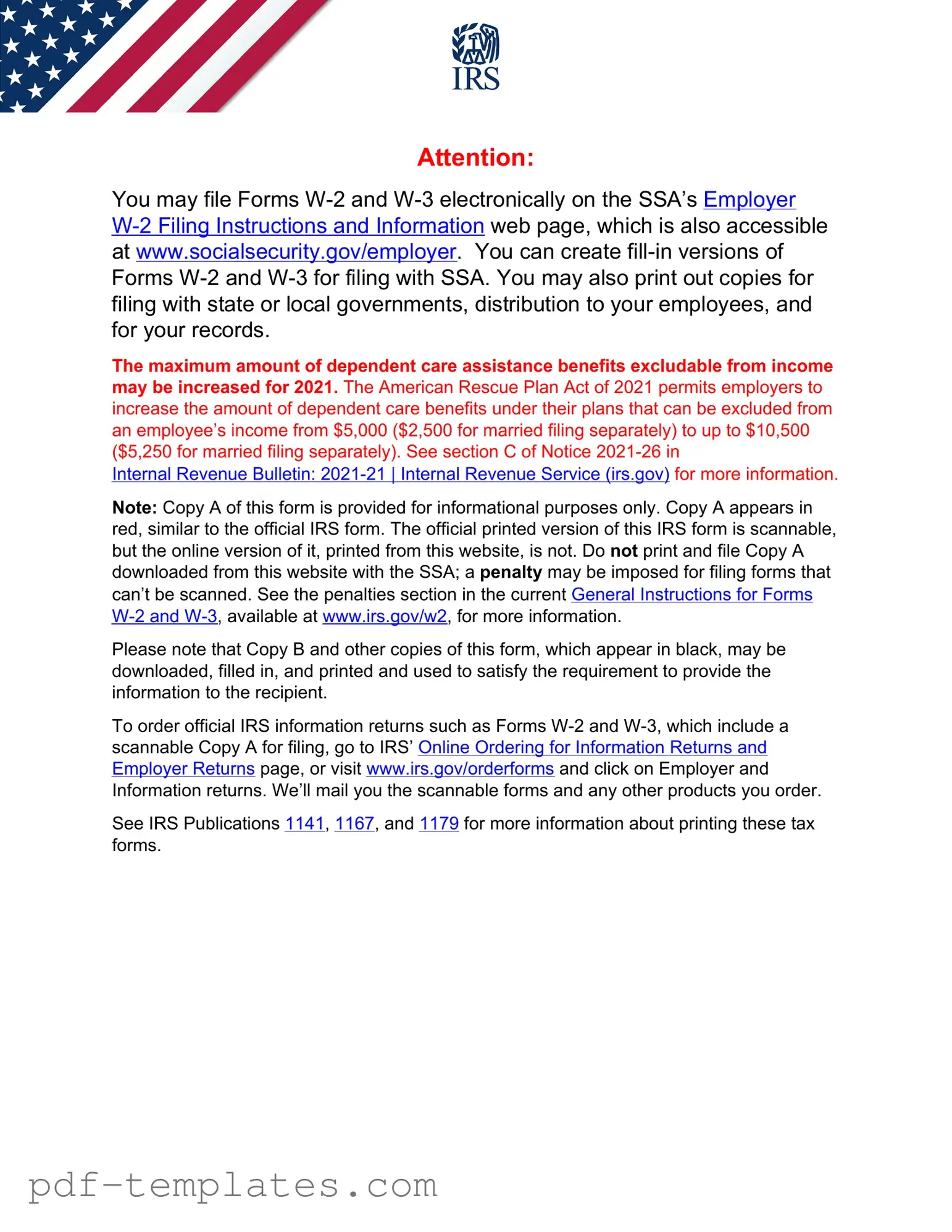The IRS W-2 form is similar to the 1099-MISC form, which is used to report income earned by independent contractors and freelancers. While the W-2 is issued by employers to report wages paid to employees, the 1099-MISC is sent by businesses to report payments made to non-employees for services rendered. Both forms provide essential information for tax reporting, but they differ in the nature of the relationship between the payer and the recipient. The W-2 reflects employment income, while the 1099-MISC captures non-employment income.
Another document comparable to the W-2 is the 1099-NEC form, which specifically reports non-employee compensation. This form was reintroduced in 2020 to separate non-employee payments from other types of income reported on the 1099-MISC. Like the W-2, the 1099-NEC provides important information for tax purposes, but it is primarily used for independent contractors and self-employed individuals. Both documents require accurate reporting of income to ensure compliance with tax laws.
The 1098 form is also similar to the W-2, although it serves a different purpose. The 1098 is used to report mortgage interest paid by individuals to lenders. While the W-2 reports earned income, the 1098 provides tax deductions for homeowners. Both forms are important for taxpayers, as they help in calculating tax liabilities and potential refunds. They serve distinct functions but share the common goal of facilitating accurate tax reporting.
The 1040 form, which is the standard individual income tax return, is another document that parallels the W-2. The W-2 provides the income information necessary for completing the 1040. Taxpayers use the W-2 to report wages earned during the year, while the 1040 summarizes total income, deductions, and tax liabilities. Both documents are integral to the tax filing process, as they work together to ensure accurate reporting of an individual's financial situation.
The Schedule C form is similar to the W-2 in that it reports income, but it is specifically designed for self-employed individuals. Schedule C is used to report income and expenses from a business, allowing self-employed taxpayers to calculate their net profit or loss. While the W-2 is focused on employee income, Schedule C addresses the income generated by independent business activities. Both forms are essential for ensuring accurate tax reporting for different types of earners.
In the realm of real estate, understanding various legal documents, such as the Transfer-on-Death Deed, is crucial for effective estate planning. This particular form allows property owners to transfer their real estate to a beneficiary outside the complexities of probate, streamlining the process during a difficult time. For more information and assistance regarding estate planning documents, you can explore All California Forms, which provide essential resources for property owners.
The 1095-A form, which reports health insurance coverage through the Health Insurance Marketplace, shares similarities with the W-2 in that it provides critical information for tax purposes. The 1095-A is used to determine eligibility for premium tax credits and to report health coverage to the IRS. While the W-2 focuses on income, both forms contribute to the overall tax filing process and help taxpayers comply with tax regulations related to health insurance.
The 1098-E form, which reports student loan interest paid during the year, is another document akin to the W-2. Taxpayers can use the information from the 1098-E to claim deductions for interest paid on student loans. While the W-2 reports earned income, the 1098-E assists in reducing taxable income through educational deductions. Both forms are vital for taxpayers, as they help in maximizing potential tax benefits.
Finally, the K-1 form, which reports income, deductions, and credits from partnerships, S corporations, estates, and trusts, is similar to the W-2 in that it provides essential income information. The K-1 is issued to partners or shareholders, detailing their share of the entity's income. While the W-2 focuses on employee compensation, both documents play a crucial role in ensuring that recipients accurately report their income to the IRS. They are integral components of the tax reporting landscape.
